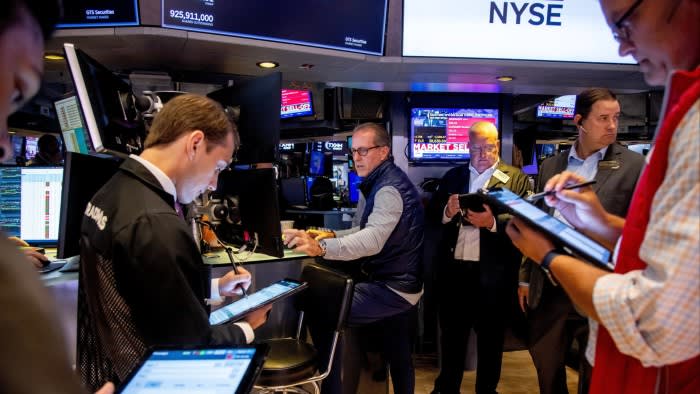The safety net of the markets may have been affected, but it lasted
Unlock the Editor’s Digest for free
Roula Khalaf, Editor of the FT, selects her favorite stories in this weekly newspaper.
One good thing to take away from the latest bout of market madness is that, thankfully, the safety net worked.
Stock markets went through the mincing machine earlier this summer, in a flurry that left investors and analysts scratching their heads wondering what just happened. For those lucky enough to have missed it, the short answer is that some weak US economic data provided the reason for selling, and some strange technical data made the whole thing worse, only to markets are back to where they started, close to parity. days. It was a low-water, slightly spicy summer market standard.
In the end, it all meant very little except for money managers rushing to hit the sell button on stocks when they knew they were riding a strong rally for months. After all, no one knows exactly how the markets will react when the period of interest rate cuts starts in the US, probably next month.
All this experience has left money managers more cautious. It turns out that stocks go up and down – who knew? The good news is that investors can now face that challenge with some degree of certainty that, if they balance their risks, the shock absorbers should work, because in this case, when the stocks take , bond prices soared.
Now, you could argue (as I did) that bond prices went up too much and too fast. Jumping to the view expressed in the bond markets that one disappointing US jobs report could push the Federal Reserve into an interest rate cut was clearly foolish. Markets were “caught”, said Vas Gkionakis, strategist at Aviva Investors. “Maybe the bond market is right and we’re wrong,” he said, but he’s skeptical.
However, exuberance aside, this is a return to the good old days, when bonds and stocks moved in opposite directions and the method of keeping 40 percent of the portfolio in bonds, and 60 percent of yields, were the old style.
This strategy has come in for scrutiny, for kick counting, as it failed miserably in 2022. Now, rising inflation, which is equally bad for bond prices itself , meant that central banks were raising interest rates aggressively – and bad for bond prices – while stocks also fell hard and fast. Investors had nowhere to hide, because while bonds are a perfectly good hedge against economic downturns, they don’t deal well with inflation, which eats away at the real value of the money returned to the economy. investors.
However, for now, the fear is not a resumption of inflation (fingers crossed), but a slowdown in the economy, perhaps even driven by a tight monetary policy. For investors, such times are what bonds are for.
In addition, bonds offer some of the highest yields in years. At the height of loose monetary policy, when central banks kept interest rates low or even below zero to try to stoke inflation after the 2008 financial crisis, many bonds did not yield. with nothing at all. About $18tn worth of debt yielded less than nothing at the end of 2020, Bank of America figures show, meaning investors were actually paying to keep it. It will be difficult to explain this to the next generation of marketers. Let’s just say it was an amazing time – but the amazing is over.
Instead, the 10-year US government bond yields 3.8 percent. The heady days of a 5 percent yield nearly a year ago may be over, and persistent quirks mean the two-year mortgage is still yielding more, but that’s still end of what this asset has provided since the financial crisis.
“We think that the risks are diverted from the policy downgrade than when the prices are being sold now, allowing . . . bonds to provide protection against equity market downturns,” said Simon Dangoor, head of stable macro strategies at Goldman Sachs Asset Management. “With high initial rates, prime products have and more space to fall compared to the last cycle,” he added – to agree with the close relationship between policy rates and short-term yields.
The problem with announcing that bonds are back is that we’ve been here before. Many times. And it has been wrong time and time again as inflation has proven difficult to beat.
“Don’t get too excited,” warns GlobalData TS Lombard. “Unless there is a recession or a weak labor market (not our primary concern), there is a good chance that the Fed’s monetary policy change will be gradual, ” Andrea Cicione and Daniel Von Ahlen wrote in the letter. In general, except for recessions, 10-year yields fall before rate-cutting cycles begin, and then adjust. If markets hint at a US recession (yes, again) then 10-year yields could stretch to 4 percent or more, they wrote — a decline that would hurt even more temper in equal measure. They said: “Bonds are not the way they were before.”
That skepticism is understandable. This safety net has holes in it. For now, though, the fact that it was holding is a big reason why stocks were able to recover so quickly over the summer.
katie.martin@ft.com
#safety #net #markets #affected #lasted
